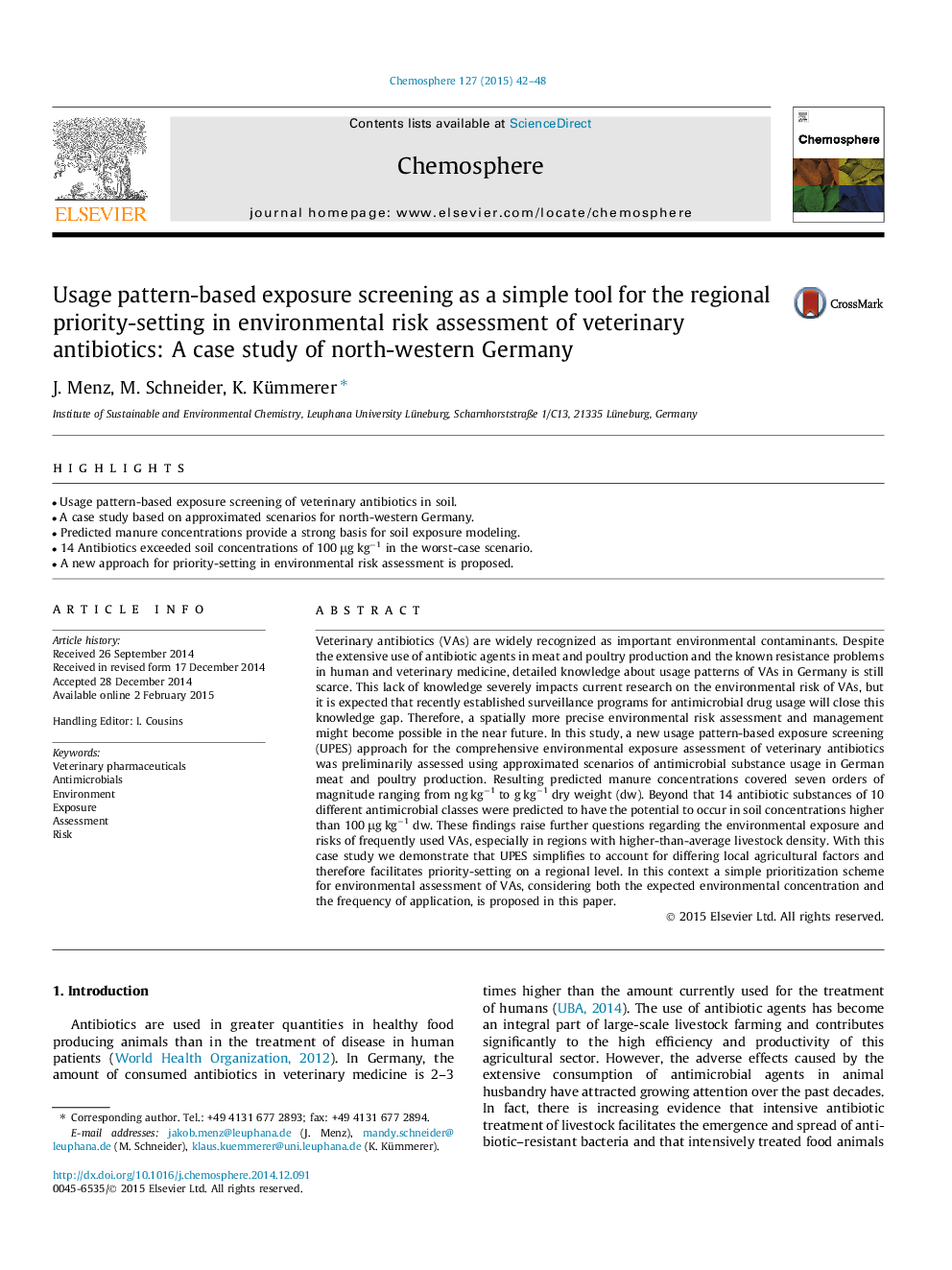| کد مقاله | کد نشریه | سال انتشار | مقاله انگلیسی | نسخه تمام متن |
|---|---|---|---|---|
| 4408520 | 1618844 | 2015 | 7 صفحه PDF | دانلود رایگان |
• Usage pattern-based exposure screening of veterinary antibiotics in soil.
• A case study based on approximated scenarios for north-western Germany.
• Predicted manure concentrations provide a strong basis for soil exposure modeling.
• 14 Antibiotics exceeded soil concentrations of 100 μg kg−1 in the worst-case scenario.
• A new approach for priority-setting in environmental risk assessment is proposed.
Veterinary antibiotics (VAs) are widely recognized as important environmental contaminants. Despite the extensive use of antibiotic agents in meat and poultry production and the known resistance problems in human and veterinary medicine, detailed knowledge about usage patterns of VAs in Germany is still scarce. This lack of knowledge severely impacts current research on the environmental risk of VAs, but it is expected that recently established surveillance programs for antimicrobial drug usage will close this knowledge gap. Therefore, a spatially more precise environmental risk assessment and management might become possible in the near future. In this study, a new usage pattern-based exposure screening (UPES) approach for the comprehensive environmental exposure assessment of veterinary antibiotics was preliminarily assessed using approximated scenarios of antimicrobial substance usage in German meat and poultry production. Resulting predicted manure concentrations covered seven orders of magnitude ranging from ng kg−1 to g kg−1 dry weight (dw). Beyond that 14 antibiotic substances of 10 different antimicrobial classes were predicted to have the potential to occur in soil concentrations higher than 100 μg kg−1 dw. These findings raise further questions regarding the environmental exposure and risks of frequently used VAs, especially in regions with higher-than-average livestock density. With this case study we demonstrate that UPES simplifies to account for differing local agricultural factors and therefore facilitates priority-setting on a regional level. In this context a simple prioritization scheme for environmental assessment of VAs, considering both the expected environmental concentration and the frequency of application, is proposed in this paper.
Journal: Chemosphere - Volume 127, May 2015, Pages 42–48
